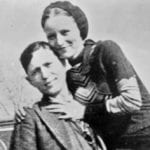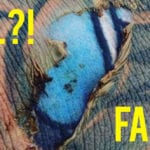 Music
Music  Music
Music  History
History 10 Less Than Jolly Events That Occurred on December 25
 Weird Stuff
Weird Stuff 10 Funny Ways That Researchers Overthink Christmas
 Politics
Politics 10 Political Scandals That Sent Crowds Into the Streets
 Weird Stuff
Weird Stuff Ten Bizarre Facts About The Doge Meme
 Our World
Our World 10 Ways Your Christmas Tree Is More Lit Than You Think
 Movies and TV
Movies and TV The 10 Coolest Stars to Set Sail on The Love Boat
 History
History 10 Things You Didn’t Know About the American National Anthem
 Technology
Technology Top 10 Everyday Tech Buzzwords That Hide a Darker Past
 Humans
Humans 10 Everyday Human Behaviors That Are Actually Survival Instincts
 Music
Music 10 Surprising Origin Stories of Your Favorite Holiday Songs
 History
History 10 Less Than Jolly Events That Occurred on December 25
 Weird Stuff
Weird Stuff 10 Funny Ways That Researchers Overthink Christmas
Who's Behind Listverse?

Jamie Frater
Head Editor
Jamie founded Listverse due to an insatiable desire to share fascinating, obscure, and bizarre facts. He has been a guest speaker on numerous national radio and television stations and is a five time published author.
More About Us Politics
Politics 10 Political Scandals That Sent Crowds Into the Streets
 Weird Stuff
Weird Stuff Ten Bizarre Facts About The Doge Meme
 Our World
Our World 10 Ways Your Christmas Tree Is More Lit Than You Think
 Movies and TV
Movies and TV The 10 Coolest Stars to Set Sail on The Love Boat
 History
History 10 Things You Didn’t Know About the American National Anthem
 Technology
Technology Top 10 Everyday Tech Buzzwords That Hide a Darker Past
 Humans
Humans 10 Everyday Human Behaviors That Are Actually Survival Instincts
10 Little-Known Facts About The Second World War
Hitler was a bad guy. That is an example of a well known fact about the second world war. There aren’t many periods in world history that have been more scrutinized, had more written about them or inspired more creative works than WWII (the tiny mustache boogaloo). Given just how complex and all-consuming the war was, a few interesting little facts and stories seem to have slipped through the mainstream historical gaps. Enjoy these lesser known events, facts and stories from the world’s most momentous conflict… to date.
10 Jews Who Fought In Hitler’s Nazi Army
10 A Battle on American Soil
Everybody knows that Imperial Japan attacked the US base at Pearl Harbour, thus drawing America into the war (and effectively signing their own death warrant). What not many people know is that Japan actually invaded the USA. Yes, Imperial Japan landed on the shores of the good ole’ US of A and engaged in combat.
The battle of Attu off the Alaskan coast was a two week-long slugfest which saw the occupying Japanese force destroyed by the American/Canadian relief forces. Years earlier, US General Billy Mitchell had told congress that “whoever holds Alaska will hold the world”.
This engagement saw the end of the Aleutian Island campaign which could have seen Japan gain a solid foothold from which to attack the USA, and maybe even win the war.[1]
9 The German Army And The American Army Fought Together
That’s right. The Americans fought shoulder to shoulder with Nazi Wermacht soldiers… against an SS Division, towards the end of the war. Phew!
The engagement has a very medieval name—The Battle for Castle Itter. The fighting, acts of heroism and general air of chaos was equally medievally flavoured too. The castle, and surrounding area, was under the control of the Waffen-SS ad had been administered under the auspices of the Dachau concentration camp.
After a prisoner revolt led to the ejection of the SS guards, the castle became a target for reoccupation by a nearby Waffen-SS force, and for liberation by a loose coalition of small US divisions, Austrian resistance fighters, a defected German army unit headed by Josef Gangl and the largely French prisoners who had seized the weapons left by their former guards.
A group of over 100 Waffen-SS troops attacked the castle. Now defended by one American tank, 14 servicemen, a handful of French prisoners and Gangl’s small force, the Allied-Wermacht coalition held out for hours until the US 142nd Infantry Regiment sent a relief force that quickly smashed the SS. Castle Itter was liberated and the French prisoners returned to Paris a few days later.
Gangl died during the battle, selflessly throwing himself in front of former French Prime Minister Paul Reynaud, saving him from a sniper. Gangl is now, quite rightly, considered a national hero in Austria.[2]
8 The ‘Midnight Massacre’
We don’t really need to rack our brains to drum up knowledge of war crimes and crimes against humanity committed during the second world war. Even certain Allied actions like the bombing of Dresden, the advance of the Red Army through Germany and Churchill’s actions which (arguably) exacerbated the Bengal famine loom large in the public consciousness. The brutalities met upon POWs are far more commonly associated with the Axis forces, Imperial Japan in particular. One egregious Allied example stands out though, and it occurred in Salina, Utah.
On July 7, 1945, Pvt. Clarence Bertucci had been drinking all evening. Before making his way back to the POW camp for guard duty, he told a waitress in town that “something exciting is going to happen tonight”. “Exciting” perhaps. Horrifying seems more apt. at the changing of the guard at midnight, Bertucci snuck up into a guard tower and took control of the .30 cal Browning machine gun and opened fire. His target? A series of tents that housed sleeping German and Italian POWs. He unloaded 250 rounds, killing 9 unwitting prisoners. “Blood flowed out the door” at the hospital that night.
Bertucci avoided serious punishment, getting adjudged insane by a panel and sent to a hospital for an undisclosed period (presumably a short one). He died a free man in 1969. His reason for committing this callous war crime? “He hated Germans, so he had killed Germans”.[3]
7 Tsar Boris III Of Bulgaria Died…
But who killed him?
He was seen as a great unifier by his people, having recovered lost territories that had been ceded after the Great War. He also kept his country neutral during WWII; allowing the Nazis to use railways through Bulgaria to access occupied Greece but refusing to provide troops for the German invasion of Russia. He also refused to deport the Kingdom’s Jewish population to Nazi camps.
In 1943, shortly after a meeting with Adolf Hitler, Tsar Boris died in Sofia. He seemed to have been poisoned by an unknown substance. So the Nazis killed him, right? Not according to the most popular theory. It was the Brits. Or maybe the Russians. Bulgaria had acted as the diplomatic link between Russia and Germany and may have been brokering a new peace accord between the warring superpowers. So British spies poisoned him to keep the war going (maybe?) It is said that when Hitler learned of Tsar Boris’ fate, he broke a vase against a wall in rage. Or because of all the meth in his system…[4]
6 Missing Nazi Uranium
When you consider just how close the Nazi regime came to harnessing the power of splitting the atom, a cold sweat should begin to form on the nape of your neck—they were too damned close.
In 2013, Timothy Koeth of the University of Maryland received a rather strange gift—a Nazi-made uranium cube. The artefact was once one of hundreds of identical cubes that were to be used in a nuclear reactor by the Germans. After the US Army dismantled all the captured Nazi weapons/energy sites in 1945, some observers claimed that there were many uranium cubes still missing. We have all heard the legends of missing Nazi gold bars, but uranium cubes? This particular atomic block that ended up in Koeth’s possession came wrapped in cloth with a note attached: “Gift of Ninninger [sic], piece of uranium from the reactor Hitler tried to build.”
It turned out that “Ninninger” was Robert Nininger, a physicist who worked on the Manhattan Project and, after his death, his estate representatives passed the curio on to Koeth. Cool right? One scary question remains—where are the others?
If you have any knowledge as to the possible location of the remaining Nazi uranium cubes, you can contact the team at the University of Maryland.[5]
10 Horrifying WWII Internment Camps Set Up All Around The World
5 The US Air Force VS An Undefeatable, Ancient Enemy
The Italian region of Campania is beautiful—with a stunning coastline, the gorgeous island of Capri and the historic city of Naples.
And Mount Vesuvius.
In mid-March of 1944, whilst the Allies occupied the region, the volcano erupted. Sgt. Robert F McRae was stationed at an airfield near the volcano, recording his observations in his diary:
“As I sit in my tent … I can hear at four- to 10-second intervals the loud rumbling of the volcano on the third day of its present eruption. The noise is like that of bowling balls slapping into the pins on a giant bowling alley. To look above the mountain tonight, one would think that the world was on fire… Today it is estimated that a path of molten lava 1 mile long, half a mile wide, and 8 feet deep is rolling down the mountain. Towns on the slopes are preparing to evacuate. Our location is, apparently, safe. At any rate no one here, civilian or Army authorities, seems too much worried. Lava has not started to flow down this side of the mountain as yet but is flowing on the other side toward Naples.”
His optimism didn’t last—the base suffered huge damage, $25 million worth of military hardware destroyed. Although there were no military fatalities, 26 Italians died and more than ten thousand displaced when their settlements were destroyed.[6]
4 Breton Separatists Were Nazi Collaborators And Resistance Fighters
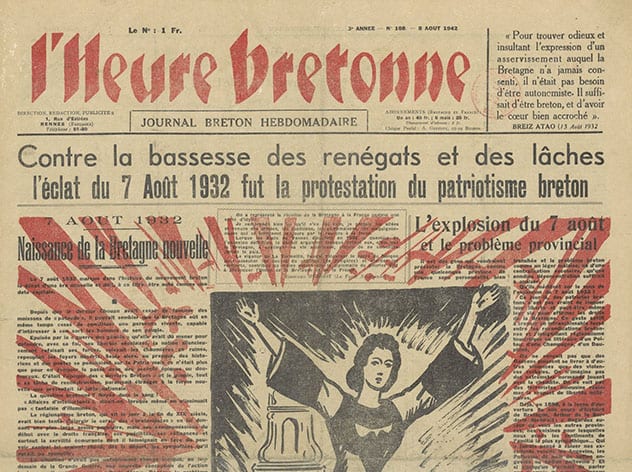
This fact speaks to the complexities beyond the simple freedom vs. tyranny, good vs. evil paradigms that are often put forward as the dominant narrative of the war (most wars, really).
It is likely that most Breton Nationalists supported the Nazi occupation, seeing their philosophy of Aryan supremacy (which included Celts like the Breton people) as a good pretext for eventually carving out an independent Breton state. But not all Breton separatists sympathised with the Nazi cause—many were of a communist/socialist bent, joining the French resistance. Imagine the Irish War for Independence, the in-fighting that culminated in a civil war, both pro and anti treaty, left-leaning and right-leaning factions supporting Irish freedom, just by different means. Done imagining this event? Now add Nazis and you have a pretty good model for this confusing, messy era in Breton history (a black mark which still haunts the largely liberal movement for Breton autonomy to this day).[7]
3 A German City Tricked Allied Bombers That It Was In Switzerland
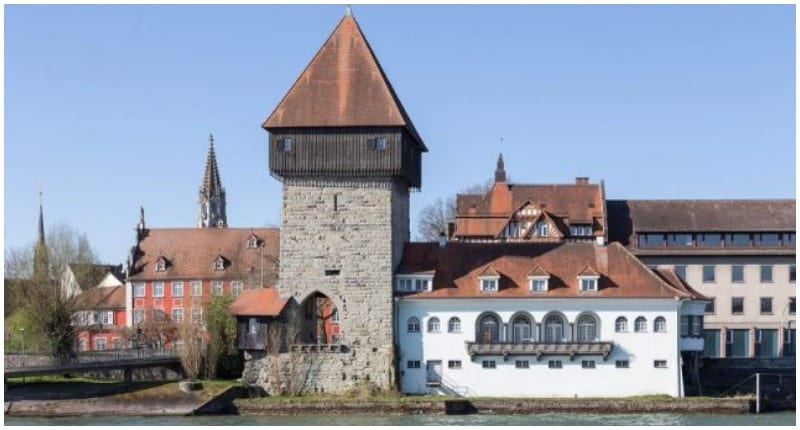
Who wouldn’t love to be Swiss? Great chocolate, a grand tradition of watch making and the opportunity to don some frilly pantaloons and guard the Pope when you need a job. One German city took this quite literally during the war.
The city of Konstanz has an amazing history—a Roman settlement that became the site of the burning of influential theologian Jan Hus (a Bohemian Catholic reformist who inspired Martin Luther), it was also the birthplace of Ferdinand von Zeppelin, famous for his airships and lending his surname to the greatest band of all time. Naturally, the citizens of Konstanz really didn’t want to let their historic home get bombed by the Allies.
There would have been compelling reasons to bomb the place—three companies were developing and producing military hardware for the Nazis. So how did the city avoid a heavy rain of firebombs? They left the lights on at night.
All over the world, large cities and towns would ‘blackout’ every night so bomber pilots couldn’t zero in on their location. How much this helped is up for debate, given the massive destruction suffered, from London to Tokyo. Switzerland, just a short distance away from Konstanz, was famously neutral in the conflict and suffered no such bombings. So, the lights blazed into the night, convincing the British, American and other Allied flyers that the city must have been in Switzerland. Genius.[8]
2 Naming Blunder
Commander-in-Chief, US Fleet, that’s the guy who was in charge of all the boats in the US Navy during the war. More commonly, in order to save time, he was called… wait for it… the CINCUS.
Sink-us!
That particularly hilarious acronym was dropped in 1941 (for obvious reasons) in favour of the far more sensible COMINCH, before the role was scrapped altogether after the end of the war. The US Navy is now led by the CNO (Chief of Naval Operations).[9]
1 The Promising Young English Author Who Disappeared
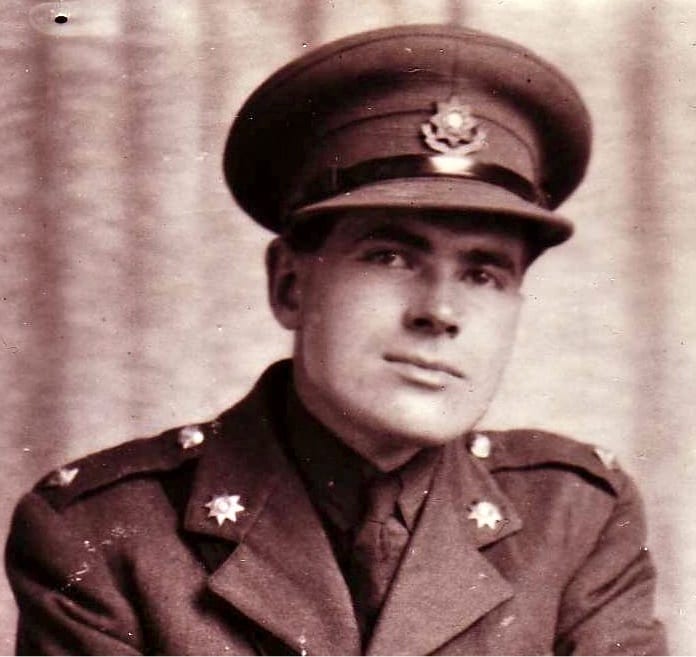
This young, talented man from Hull, England would have had a successful, long career as a novelist. He had already began his literary career strongly (already having published 2 novels whilst on active duty) when the war broke out.
By 1943, he found himself a POW in Italy. Did he wither like so many men, beaten down and defeated, (understandably) unable to see a bright future? No. Dan Billany kept working. He worked on two more manuscripts whilst imprisoned.
After the fall of Italy , a tidal wave of Nazi defenders came flooding into the country to defend against the advancing Allied forces. Billany took advantage of the chaos and fled into the countryside. He kept chipping away at his novels, all the whilst evading the Nazis. When he finally finished his works, he gave them to a friendly local who vowed to send them to England when the war ended. Both novels did get back to England—’The Cage’ and ‘The Trap’ were published, gaining much critical acclaim. But Dan Billany wasn’t around to enjoy his success. He disappeared in the Apennine mountains in 1943. His fate is unknown.[10]
10 Famous People Who Were Nazi Sympathizers
About The Author: C.J. Phillips is a storyteller, actor and writer living in rural West Wales. He is a little obsessed with lists.





